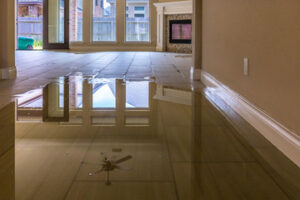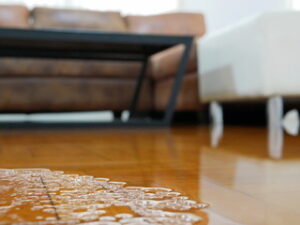Whether you’re dealing with drafty windows or noticing moisture damage, it may be time to replace them. Investing in replacement windows can provide a range of benefits, including improved energy efficiency and increased curb appeal. Contact Replacement Windows Round Rock for professional help.

With more and more homebuyers seeking green features, energy-efficient windows can help you stand out in a competitive real estate market.
New energy-efficient replacement windows can help your home reduce its carbon footprint and lower its energy consumption. In doing so, they can also contribute to improved air quality. This is because they do not add to the demand for fossil fuels, a major source of air pollution. Furthermore, these windows help minimize condensation build-up, which can lead to the formation of mold and rot in your home.
Over time, old windows can lose their insulating properties. This means that your heating and cooling system has to work overtime just to keep your house comfortable. Energy efficient replacement windows eliminate this problem by using advanced insulation materials and technologies. These features ensure that your home stays cool in the summer and warm in the winter, while reducing your energy bills significantly.
In addition to lowering your energy costs, replacing your windows with high-quality options can also boost the value of your property. In the current real estate market, more and more buyers are looking for homes that are both energy-efficient and environmentally friendly. In fact, some estimates suggest that homeowners can recoup the cost of their new windows when they sell their home.
Energy-efficient replacement windows feature a variety of attractive features, including Low-E coatings and double or triple-pane glass with gas fills (such as argon and krypton) between the panes to maximize energy efficiency. These features can help your home save on energy costs, while improving comfort and enhancing curb appeal.
Another benefit of energy efficient replacement windows is their ability to limit outside noise. This is particularly important for homeowners with children or pets, as they can be easily disturbed by loud voices and sounds. In addition to minimizing noise, energy efficient windows also help to minimize heat transfer. This makes them a great option for people who live in hot climates where the temperature can fluctuate greatly throughout the year.
As an added bonus, many of the energy efficient replacement windows on the market today are designed to look as beautiful on the inside as they are on the outside. They are available in a wide array of colors, finishes and styles, so you can find the perfect window to fit your needs and complement your home’s aesthetic.
Increased Curb Appeal
Whether you’re planning to sell or simply want your home to look better, enhancing curb appeal should be a top priority. There are many ways to achieve this goal, but the best way to dramatically improve your home’s appearance is through window replacement. New windows provide a clean, crisp look that adds a fresh, inviting aesthetic. Additionally, they come in a variety of colors and frame styles, so you can find the perfect match to complement your home’s architectural style.
You can take your curb appeal even further by matching your replacement windows to your siding, roof, and landscaping. For example, you could choose a white or beige window color that complements your house’s siding and roofing, and then add black trim to create a striking contrast. You can also choose a natural wood finish for a timeless look that will never go out of style.
Another way to boost curb appeal is by installing window boxes. These can be used to grow flowers, vegetables, and other plants that will add beauty and functionality to your home’s exterior. They can also be used to display artwork and other valuables.
Upgrading your windows can add a fresh, modern feel to your home and increase its value. It’s important to do your research before committing to any project, so you can be confident you’re making the right choice. To learn more about how replacement windows can transform your home, contact us today. We can show you examples of past projects and help you choose the best windows to meet your needs. We also offer financing options to make the upgrade easier on your budget. To get started, schedule a free consultation.
Increased Home Value
Many homeowners want to make upgrades that will increase their home value. However, wall-to-wall renovation projects can be costly and time-consuming. New windows offer a great return on investment (ROI) and can be completed in less time than other projects, making them an affordable and effective option.
New windows can dramatically improve your home’s interior, exterior, and curb appeal, making them a desirable feature for prospective buyers. They can also enhance the home’s overall energy efficiency and comfort, reducing your monthly heating and cooling costs and creating a more comfortable living environment.
In addition to improving your home’s appearance and function, replacement windows can help reduce noise. Modern windows are designed to be more insulative, keeping the inside of your home warm and quiet while blocking out outside noises. This can be especially helpful if you live near a busy road or have noisy neighbors.
Modern windows are also more durable than older styles, meaning they’ll last longer and require less maintenance. They are less likely to warp, crack, or peel, and many come with low-maintenance features like easy-to-clean surfaces. Additionally, some window types are designed with safety glass options, which can add an extra level of security and appeal to potential buyers.
Newer windows are also more aesthetically appealing than older styles. They are available in a wide variety of shapes, sizes, and materials, allowing you to customize the look and feel of your home. For example, you can maximize the sunlight in your home with bay or bow windows, or create a classic colonial-style look with casement windows. Additionally, you can find windows with narrow sashes (the part that holds the glass) to create a more streamlined and contemporary look.
As a result, premium replacement windows can significantly boost your home’s value and increase the resale price. Depending on the style and material you choose, and the installation process, you may be able to recoup 70-70% of your investment at the time of resale.
Reduced Noise
Noise pollution can be a serious issue for homeowners living in urban environments, as traffic and nearby construction are common sources of constant noise. In addition, neighboring homes, children’s play equipment, and lawn equipment can generate sounds that easily travel indoors. For homeowners struggling with noise pollution, choosing replacement windows that are designed to minimize it can greatly improve their home’s comfort and serenity.
Noise-reducing replacement windows are created with advanced technology that significantly reduces the amount of sound that penetrates a house’s interior. These windows utilize a combination of factors to block out noise, including laminated glass, multiple panes, and varying thicknesses of glass. Laminated glass features a layer of plastic between glass panes, which dampens sound waves and further diminishes the transmission of vibrations. Multi-pane replacement windows also provide acoustic benefits by creating additional barriers that noise must penetrate before reaching the interior of a house.
Additionally, new windows often feature tight seals and strong latches that prevent air leaks around the frame. Gaps and leaks can negate the effects of any noise-reducing technologies, allowing outside sounds to make their way into a house. Lastly, new windows are often installed with high-quality caulking to further increase the effectiveness of their noise-reducing capabilities.
Not only do replacement windows reduce the penetration of unwanted noise, but they also contribute to a more comfortable home environment by helping to maintain a consistent temperature throughout the house. This helps to eliminate drafts and cold spots and can result in energy savings for homeowners. In addition, many modern windows feature coatings that help to reduce harmful UV rays that can fade furniture and carpeting over time.
If you are ready to upgrade your home’s aesthetic and comfort with noise-reducing replacement windows, contact us today. Our experts can recommend a window style and frame that works best with your property’s unique needs and your personal preferences. In addition, we can provide further details about the energy efficiency and other benefits of new windows that can help to maximize the value of your investment.


